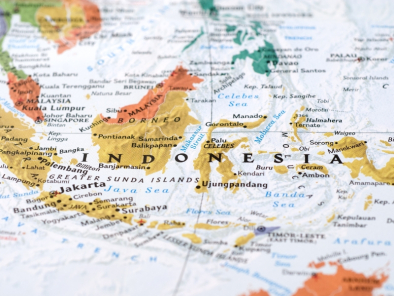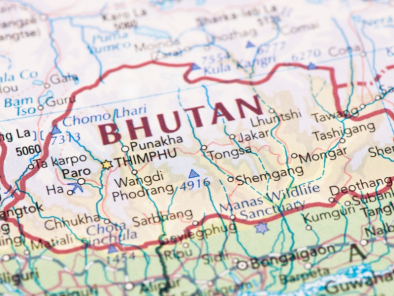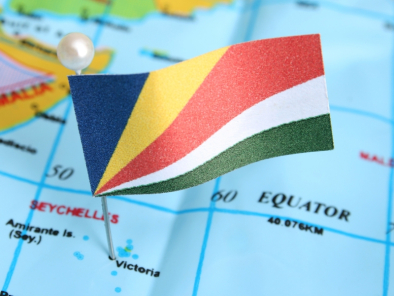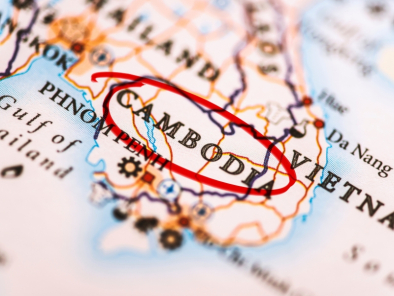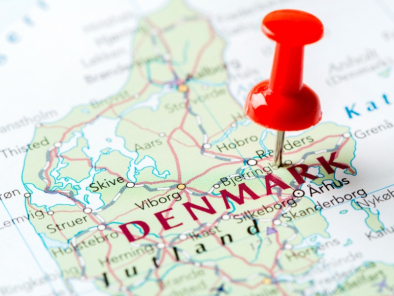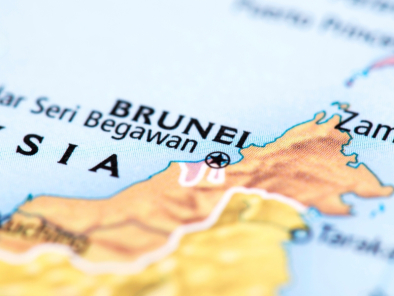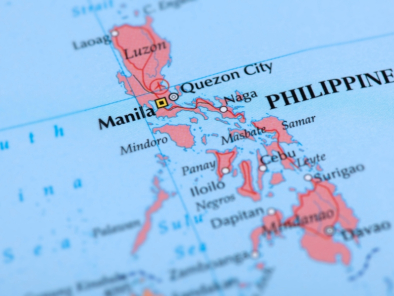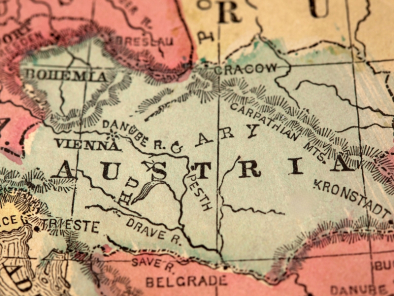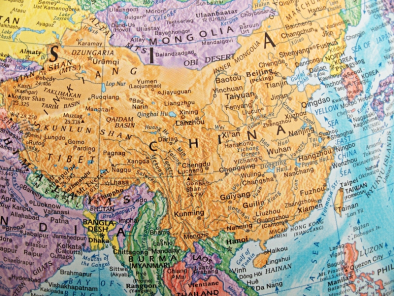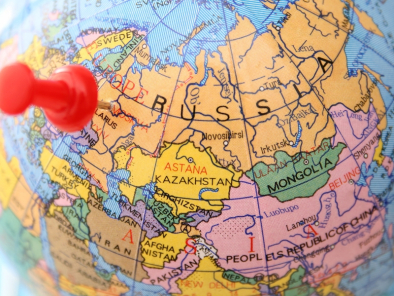
Posted by: Leo Travel Hub
It took many years for
Location
Geographical Area
The geographical area that makes up
Climate
The climate in
In general, the best time to visit is May-September, when the day
temperatures are in the /23-35 C, and nights are in the 10-23 C. Spring and
early fall, however, are unpredictable: Snow flurries and temperatures in the
mid /-5 C are possible in May and September. Be sure to take waterproof shoes
for spring or fall visits - there's a lot of mud. There are a few reasons
someone might want to go during the winter: In Moscow and
CURRENCY:
The official Russian currency is the
Russian ruble. The currency code for the ruble is RUR. The ruble has a
comparatively low value against other currencies.
Getting There
Air
:
Train: Rail travel into and around
but time-consuming. The network of
railways in
Ferry:
Bus:
By
bus, the
TIME:
Regions
in Brief
Ukraine and Turkey in the west, passing Kazakstan, Mongolia and China, to reach the Pacific Ocean some 6000km later.
CLOTHING:
ELECTRICITY:
The voltage used is 220 volts.
DAILING CODE:
Dialling
Your International
Prefix + 7 + 495 + number
Dialling
Dial 8 (wait for
tone) + 495 + number
Public phones in
Facilities for Telephones, cellular phones, radio and
television stations have been firmly established in the country for some time
now. The internet is also readily available and is used by a large portion of
the countries inhabitants
CUISINE
There are a few things that the Russians have
always managed to do well, and that includes eating and drinking.
Although Russian food is characteristically rich and filling the variety the visitor will find is one of
MEDICAL
Although the better hotels are likely to have
water purification systems tourists should avoid drinking the tap water in
Food bought in restaurants is unlikely to have any ill effects upon you but the
street vendors of
Health care in
You can expect a high standard of health care in the capital. These hospitals will provide medical care. Although
foreign-speaking staff may be available, it may be useful to have a translator
in attendance should you require consultative treatment in a Russian hospital.
European Medical Centre
Spiridonievskiy Per 5, Bld 1
Tel: +7 (8)495-933-6655
Personal Safety
In bars don't let anyone buy you
a drink and don't leave drinks unattended. There have been recent incidents that
involve the drugging of drinks in order to facilitate theft.
The influx of foreigners in recent years has caused a rise in racist
sentiments among some parts of the Russian and Muscovite community.
"Skinhead" gangs target black people in particular although any
foreigner may be a target. Racially motivated attacks have been reported. It is
very unlikely that you should see or be a victim of any such incident but if
you see gangs of youths you are best avoiding them if possible.
You will see plenty of police on
It used to be not unknown for police to "fine" tourists on the street
for some minor offence (real or imagined) but this is much less likely to occur
nowadays. If an on-the-spot fine is demanded you are best advised to pay it -
it will never amount to much.
You can find the local law enforcement at:
Litvina-Sedogo ul,
3a
Tel: +7 (8)495-256-7575
Emergency Numbers:
Police:
02
Ambulance:
Tel: 03
Fire: Tel: 01
TIPS:
This is a matter of personal discretion. Tips are appreciated and expected for good service in restaurants and other places. Usually it covers 5-10% depending on services.
Currency: Rouble (RUR).
RUR1=100 kopeks. The Rouble was re-valued in 1998 with the "new"
rouble having a value of 1000 times that of the original. It was only after
revaluing that the kopek came back into meaningful circulation. Kopek coins
issued before 1997 are worthless as new coins were minted following the launch
of the new currency. Text
Notes:
RUR10, 50, 100, 500
Coins:
RUR1, 2, 5 and 1, 10, 50 kopeks
Credit cards: Credit
cards are usually accepted in most places that work with foreign tourists. Some
may turn down American Express. Visa and MasterCard are better known, hence
more widely honoured.
The only currency in legal use in
Credit and debit cards can be used in ATMs and over the counter to obtain roubles, but charges tend to be very high for the service. Check with your own bank before travel as to how much this will cost you.
LANGUAGE:
Russian is the official language.
SHOPPING and MUST BUYS:
Visitors to
CITIES:
MOSCOW
Getting There
Air
: Has two major airports . Sheremetevo &
Domodedovo . Domodedovo has better connections to the city center compared to
Sheremetevo. Approx time taken to reach city center by public transport is 90
mins and by taxi is 45 mins .
Train
:. The St. Petersburg-Moscow train route
is the country’s best-maintained and most romantic. Western European trains
generally arrive in Belorussky station, barely north of the city center and
within walking distance of the hotels on busy
From Domodedvo airport located 50 km from the city centre,
direct trains ply to the the Paveletsky station near the centre and takes about
40 min.
Bus:
Buses arrive at Tsentralny Avtovokzal
(Central Bus Terminal ). If arriving by plane \, there is no train services to
downtown from Sheremetevo airport, but buses leave the airport parking lot and
stop at Rechnoi Vokzal metro station (bus no. 551) or Planernaya metro station
(bus no 517) which take 90 min.
Taxis: Time take from airport to downtown is approx 45 min.
Getting Around
The Moscow Metro is an attraction unto itself, and well
worth a visit to view a few stations even if you have other transport.
Trams are second-best to the metro if there’s a tram route
near your hotel or destination.
Trolleybuses, attached to electrical lines overhead, are a
good option for travel around the Garden Ring Road or along
Attractions
Red Square is a
dramatic open cobbled space in the centre of
and has some of the
major tourist attractions like
Lenin’s Mausoleum- Lenin’s Tomb, or better known as Lenin’s Mausoleum, is
situated in Red Square in
St.Basils
cathedral
With its multi-coloured onion shaped domes and small crowded chapels, the
cathedral hardly resembles those of
Opening Hours: Wed-Mon 10h00-17h00. Closed first Mon of the month. Tel: +7
(8)495-298-3304.
Kremlin
Just a few footsteps away from Red Square lies the heart of
Originally built in the 1150s it has undergone many changes in the 850-odd
years it has stood here. The curtain walls that surround the citadel were only
added in the Middle Ages, and the churches that once stood here were demolished
in the 15th century to allow the building of the current citadel. There are
several cathedrals containing many of
The State Armoury contains the wealth of the tsars, including the crown
jewels used at the royal coronations. The priceless collections include the
State Diamond Treasury (accessible via a separate entrance) and exhibits range
from court clothes to the royal carriages. There is a magnificent display of
the unique eggs sculpted by Fabergé.
You
should also take time to visit the sumptuously named Faceted Palace, and
its magnificent vaulted main hall and famous "Red Staircase". Facing
the palace across the square is the Ivan the Great Bell Tower. At the
foot of the tower is the 200-tonne Tsar Bell - the largest bell in the
world. It was never rung as during a fire at the Kremlin in 1737 water was
poured over the bell as it lay still hot in its casting bed, causing an
11-tonne section to crack off. The Tsar Cannon is a similarly
magnificent piece of cast-metal engineering. Dating from the late 16th century
it weighs over 40 tonnes and sits in its own square at the northern end of the
bell tower.
Some areas of the Kremlin compound are obviously off-limits, but there is still
plenty to see within the imposing walls. Make sure that you stay strictly
within the marked tourist areas, although the patrolling policemen will warn
you if you are wandering off the beaten path. You should allow at least half a
day to see even a portion of the citadel and should really make a couple of
trips if you want to see everything on show here without exhausting yourself.
Citadel open: daily 10h00-17h00 (closed Thursdays). Visitors wearing shorts are
not admitted.
Any visit to
Arbat
The Arbat has many quaint sidewalk cafés, street vendors, actors,
and artists. The former home of many underground poets and writers during the Soviet era, the Arbat still has a
vague aura of rebellion to it. It is one of
Tretyakov Galleries
South of the
Graveyard of Fallen Monuments
Behind the New Tretyakov Gallery is the Graveyard of Fallen
Monuments. It is here that all the deposed statues of Communist heroes
have been deposited. It is a magnificent, if weathered, and slightly odd
collection of Soviet statuary that tells the tale of modern Russian history.
As you might expect you'll find plenty of Stalins, Lenins, Dzerzhinskiis and
Brezhnevs adorning this interesting park along with less recognisable figures,
chiefs of police and more minor politicians among them. It's a quirky
attraction that provides plenty of photo opportunities and a delightful visit
in the unlikely event that you're nostalgic for the Cold War era. From the
"Graveyard" you'll easily be able to see the massive and
controversial statue of Peter the Great, in visionary posture. Designed
by sculptor Zurab Tsereteli it was erected in the late '90s against strong
opposition. Tsar Peter still hasn't been forgiven for moving the capital from
Not far from the Kremlin
and Red Square is the Pushkin Museum of Fine Arts,
The original collection was comprised of the private collections of citizens,
which were nationalised after the Russian Revolution, but it has since grown,
most significantly with the addition of hundreds of pieces seized from the
Germans following World War Two. Famously
Ulitsa Volhonka.
Opening hours: daily 10h00-19h00.Tel: +7 (8)495-203-9578/7998.
Novodevichy Convent
Novodevichy is best known as the home of Peter the Great's deposed
half-sister, Sofia. Not wanting to give up the throne to the Tsar after his
reaching adulthood, he had her sent packing here in 1689.
The convent was founded in 1524 to celebrate the seizure of
Designed to resemble the Kremlin in many ways this was once one of the richest
convents in the land and is surrounded by forbidding towered walls. Napoleon is
said to have tried to blow the convent up in his ill-fated 1812 invasion of
Convent open: daily 10h00-17h30 (closed Tuesdays).
Kitay
Gorod
The narrow alleyways and streets to the east of Red Square are
called Kitay Gorod, which means "
Wandering its streets you will find the old Moscow Stock Exchange, the
Printing House (where Russia's first book was printed), Chambers in the Zaryadie
Museum (dedicated to the lives of the Romanov family before they became
tsars, emperors and empresses) and the English House (home of the first
English emissaries to Russia sent by Elizabeth I).
Located at the northern end of Red Square, the
Here the grand scope of
Location:
Bolshoi Opera and Ballet theatre
There is only one
place for ballet in
Book tickets well in advance. Tel: +7
(8)495-250-7317 from 10h00-18h00.
Nearest metro: Okhotny Ryad or Teatralnaya.
Kropotkinskaya
The structure was originally built and used as a traditional manège where
horsemen could parade their skills. It also served as a training school for
officers. Amazingly enough, the Moscow Manège was large enough to hold all
two-thousand soldiers of a standard infantry regiment, as well as an audience.
However the manège has long since ceased to be used for horses. In 1831 it was
converted into an exhibition place and despite a short stint as an art gallery,
this is still its main purpose. The Moscow Manège is a truly remarkable
building situated right next to
Cathedral of Christ the Saviour
The Cathedral of Christ the Saviour stands proudly in
Ekaterinburg Zoo
It was only in 1994 that the Zoo was reconstructed and there was active
finance to revive it. On January 1, 2000 the number of animals housed with in
the Ekaterinburg Zoo was approximately 528, of which there were 180 different
species. Now, there are more then 240 species of animals, of which 64 are
mammals, 90 birds,
53 reptiles, 8 amphibians and 27 different types of fish so the collection
continues to enlarge. The Zoo has three pavilions, which are much appreciated
by the heat-loving animals not indigenous to the country. One is for the birds
and unusual predators, one is for the apes and monkeys and lastly there is one
in the Exoterrarium building.
In this three-storey building there are two floors exclusively for exotic
animals and the other is the educational centre and junior natural history
study group. Visitors can observe two different species of the lemur and galago
family, as well as a variety of small apes, for instance Fossas, marmosets and
mongooses. The North animals, like the North predators birds of prey, Amur
tigers and bears live in the outside cages.
There are 40 species of animals that the Ekaterinburg Zoo houses that are
included in the International Red Book, Red book of
The name Great Patriotic War was given by the Russians to describe the war
that started in 1941 and ended in 1945, otherwise known as World War II. While
the Nazi’s fought on many fronts, the Russian states made up the Eastern Front
of World War II. The Great Patriotic War took the lives of 25 million, and the
Soviet army was involved in six major battles and approximately 40 offensives.
Their effort and dedication assisted greatly in defeating the enemy and
bringing the Nazi regime to its knees. Many monuments such as
The Stele of the
The
Accommodation in
Accommodation is expensive in
Accommodation in
Moscowis divided into two camps. On one hand you will find luxury hotels offering
all the facilities you could expect from any capital city in the world. On the
other hand are the Soviet era hotels, characteristic but not always
up to international standards, although their idiosyncracies will provide
plenty of stories for when you return home.
The modern hotels in the city centre often occupy old buildings and are usually
foreign chains or foreign owned. Inside they represent the best standards you
could expect from hotels anywhere in the world. In the suburbs is where you'll
find the Soviet era hotels, usually in large edifices. There are some massive
modern complexes as well however, which are dotted on the periphery of the city
and are not always ideal for sightseeing. The banks of the
Nightlife
Many clubs offer "exotic" evening entertainment, and it can sometimes
be hard to differentiate between those that have some kind of adult floorshow
and those that don't before you pay the usually high cover
charge for
admission. Although the better clubs in the city are usually safe, often prostitutes
operate in them, and will target tourists. Some also have a reputation of being
hangouts for local gangsters. Keep your wits about you, stay sober and avoid
insulting anybody and you should be all right.
Territoria
Tverskaya
ulitsa, 5/6
Tel: +7 (8)495-292-4544
Close to the central attractions of the Kremlin and Red Square Territoria is a
popular place with students, though its recent refurbishment may soon entice a
broader cross-section of clubbers. The music styles are a real mixed bag but
tend to be young and pretty upbeat by
Propaganda
Bolshoi
Zlatoustinskii Pereulok, 15
Tel: +7 (8)495-924-5732
Cool club/bar packed with expats and locals most nights of the week, Propaganda
is one of the places to be
seen. A host of local and foreign DJs play a mix of mainly techno and acid jazz
with a sprinkling of house, the warehouse-style décor a sign of its trendy
aspirations. There's usually a gay night on Sundays, but check to be sure.
Karma
Bar
Pushechnaya
ulitsa, 3
Tel: +7 (8)495-924-5633
Attracting a predominantly young crowd, Karma plays mainly R&B, chart and
Latin music. Not one of the most fashionable places in town, but an
unpretentious crowd gives it a fun vibe, and a packed dancefloor is almost
always guaranteed.
Excursions There are several places within
striking distance of
70km north-east of
the capital is the fortified monastery of Troitsko - Sergieva Lavra, in the
town of
The complex was first established in the 1340's by St Sergius himself. The
earliest building extant is the white Trinity
Cathedral which
dates from the early 1400s. The interior decoration by Rubylov counts among
some of the finest religious art from the period still standing in
Sergiev Posad can be reached by bus, train or taxi. The bus which leaves f rom the main train Shcholkovsky Bus Terminal takes about 2 hrs. the train leaves Yaroslavsky Train Station and takes about 1 hr 30 min.
If you want something more substantial you can take longer cruises down the
canal to the major waterways. Away from the city limits you pass through
idyllic Russian countryside and can see some of the inner beauty of this
fascinating and inaccessible territory. Cruises can range from several hours to
several days. If you have a week or more to spend messing about on the river
you can travel as far as
Suzdal
& Vladmir
Located
200 km from
Vladmir,
oncea provincial capital more prosperous and holy than
To get
there: Intercity buses run direct to Vladmir from
Traditionally a city of artists and intellectuals, with such
eminent progenies as Dostoyevsky and Shostakovich, visitors to
Getting There
Air
:
Train : Entering St. Perter’s berg by overnight train from
Moscow is one of the most romantic things you czn do in Russia.(travel time 7-8
hrs)The Moscow-based trains arrive at, appropriately, Moskovsky (Moscow)
Station, right on Nevsky Prospekt, within walking distance of several major
hotels. Easy train connection is from
Bus : Buses arrive at St. Petersburg Bus Station from Scandinavian countries.
City Layout
The
Getting Around
Public
Transport
Buses- The same cannot, unfortunately, be said of the public bus into the centre, which is miserable, overcrowded, and looks like it's celebrating a 300th anniversary of its own. The least-worst option if you refuse to take taxis is the shuttle minibus service (No. 39) which leaves approximately every 20 minutes from 05h30 until the last flight, and connects to Metro Station "Moskovskaya" (17km). Fares change rapidly - currently they stand at RUR15 per person, and then an additional RUR7 for your onward Metro ticket into the city.
Metro![]()
As far as it runs the Metro is ferociously efficient, with a bargain
RUR14 any-distance fare (or a ticket allowing ten journeys over a 7-day period
for RUR115), and trains which come every 2-3 minutes without fail.
Don't forget to allow a few minutes at each end merely for the
escalator journey - it's very, very deep, because of the waterways above. Avoid
rush hour (Mon-Fri 08h00-09h30 and 17h00-19h00), unless you want to understand
what Marx's term "the solidarity of the Proletariat standing
shoulder-to-shoulder" really means.
Although not as beautiful as the Moscow Metro, some stations
(notably Mayakovskaya) are attractions in their own right, in overblown
Soviet style.
The Metro operates from 05h45 until midnight. Signage is solely in
Russian - learning the 33 letters of the Cyrillic alphabet gives you a
substantial advantage when using this mode of transport.
Buses and trams
All the surface forms of transport have a "pay-the-conductor"
system on board - the conductor gets very upset if you sit in her seat.
Flat-fare tickets are RUR6 per ride (but subject to sudden changes) - having
small change will greatly help international relations, whilst presenting a
RUR500 bill for the six rouble ride may earn you a free lesson in contemporary
colloquial Russian.
A convenient alternative to the public bus are private minibuses, which charge
around RUR12-15, depending on the length of your journey, making stops on
request only along their route.
Special Warning: During the Summer
"Navigation Season" (May-Sep) all city bridges are raised at night to
allow ships to pass. Each bridge has its own timings, but you should assume
that if your ride home involves a bridge, you need to be clear of it by 01h00
to be sure of getting back. Otherwise you could be waiting four hours until it
closes again. There are no car-ferries, alternative routes, or any ways around
this! The biggest obstacle is
Driving public Transport
In a city where
taxis are plentiful and cheap, there are almost no advantages to hiring a car.
Most Russian men don't take a driving test, as they learn to drive while on
compulsory Army Service - learning a uniquely military style of driving they
pursue later in civilian life. Since
If you bring your
own car from
Points to
consider:
Traffic drives on the right and speed limits are 60km per hour (37mph) in the
city, 110km per hour (68mph) in outlying areas and 120km per hour (72mph) on
highways.
The wearing of seatbelts is mandatory. At many junctions it's impossible
to turn left and you have to follow a diversion route, which is generally well
sign-posted.
Russian road
sign markings are
broadly the same as the rest of
One special point to note is that on roundabouts you give way to joining
traffic which has priority - the opposite to what you might be used to at home.
At DPS road-blocks on inter-city roads you must stop, until you are given the
all-clear to proceed. Radar guns are in regular use (especially on the
If you are pulled over for any reason, you
must halt immediately (you can legally be fired-upon if you fail to do so) -
you should get out of the car and present your documents without being asked to
do so. Be polite, keep calm, do whatever they tell you. Be ready to apologise,
even if you do not agree that you have done what they say. Do not get angry
even if excessively provoked with accusations you find unreasonable, and
remember - "there is always a way out of this". There is a zero-tolerance
law on driving under the influence of alcohol or narcotics, and the penalties
are very severe (and there is not a way out of this). It is, on the whole, much
better to let a local driver bear the brunt of all this for the small fee it
will cost to have them drive you instead (see below).
UMA
Autoclub
provides a 24-hour breakdown service on
The Traffic
Police
(officially now called GIBBD or DPS, although you will still hear the old name
"GAI" used) are bored and underpaid, and fill their time - and
pockets too, sometimes - stopping people for petty offences, or for no reason
at all. Bribery is mostly endemic; expect no mercy as a foreigner - indeed,
expect to be seen as a wallet on wheels.
If you are still determined to rent after all that, then you will need an International Driving Licence and licence from your home country. The minimum driving age is 18. Major car hire firms can be found at the airport and in the city centre.
Taxis
There are two kinds of taxi in
The hiring process consists of you opening the passenger door (don't wait for
the window to come down - it never will), and stating your destination. The
response is usually "how much?" from the driver, forcing you to
suggest a figure. (Suggestion - do not hold onto the door-handle if you plan under-guessing
by large amounts, as it's surprising how quickly those old taxis can move off.)
As a general rule, figure on offering RUR100 for each ten minutes of
expected driving (this is actually rather generous, you could even try lower),
and bargain only in units of RUR50. However, there is almost no bargaining if
you fail to name a price he'll consider - he will drive off straight away
without offering you a chance to up your offer.
You can try insisting that he goes on the meter, but most taxi drivers
refuse to do so. Fares rise after the Metro closes at midnight, or in the rain,
or if the local soccer team lost. Look around you - if you're outside a grand
hotel, a theatre or nightclub, or something similar, try walking 200m down the
street, and fares will drop like magic. Assuming you eventually reach
agreement, on arrival you pay strictly what was agreed and not a kopek more -
you never, ever, tip taxi drivers in
The procedure with unofficial taxis is basically the same, but you can
offer approximately half the fare you'd offer an official taxi, with a good
chance they will take it. People inevitably wonder how safe it is to climb into
a car with a complete stranger and here you have to let experience be your
guide, but there are still some watchwords.
Never get into a car if there is anyone else other than the driver already in
it. Do not allow the driver to pick up other fares along the way, and if he
does so anyhow, get out. If you have a bad feeling, glance behind the driver's
seat to check there is no-one hiding there. However, bear in mind that taking
"unofficial" taxis is the norm rather than the exception, and that if
anyone did want to rob you, stealing an official taxi would be far less risky
than using his own car (which could be traced) to do so.
The "unofficials" are a strange mixture of people ranging from those
who just hope to share petrol costs on a journey they are making anyhow, people
doing it for a living, official chauffeurs moonlighting with the car while
their boss is away, or even just lonely people looking for a chat. In a city of
intellectuals, they are actually a feature of the city, and it can even be a
pleasure to ride with them whilst they tell you about their life, or even read
you their poetry. With "unofficial" taxis, you should scale the price
you offer according to the vehicle - lower for a pensioner in his old
Moskvich, more for the pro chauffeur offering to ferry you for pennies in a
Mercedes. And again, no need to tip.
Must sees
The magnificient green, white
and gold
Of Peter's own palace - in this city of palaces - there is no
visible sign. Its structure lies within the expanded, redesigned and reinvented
Public access for individual visitors is from Dvortsovaya Naberezhnaya (Palace Embankment) 34. Tel: +7 (8)812-571-8446.Opening hours : Tue-Sun 10h30-18h00. Extended opening in summer.
Prince
Menshikov's Palace
Peter the Great's formative role went far beyond merely
commissioning the work on his city; he even sat down and mapped out the
street-plan and canal network himself, together with his inseparable drinking
companion Prince Menshikov. Determined to drag Russia directly from the 15th
into the 18th century, the pair plotted that all "backward" Russian
traditions (including even beards) would be abandoned in favour of the latest
modes they had seen in Europe.
Prince Menshikov's Palace is a shining first example of the
philosophy - built entirely in Dutch style, elegantly restrained, and
decorated with imported
Universitetskaya Naberezhnaya 15. Open: Tue-Sat 10h30-18h00; 10h30-17h00. Admission: RUR350 and RUR300 for guided trip around Museum. Tel: +7 (8)812-571-3465.
The Kunstkamera of Peter
Whilst on St Basil's
This ghastly assortment of Nature's aberrations - deformed human
embryos, two-headed dogs, and other "monstrosities" - was Peter's
private Collection of Curiosities. Newly-arrived official visitors to
his city were taken on conducted tours - to test their nerve. Universitetskaya
Naberezhnaya 3. Open: Tue-Sun 11h00-17h45 (closed the last Tue of each month).
Admission: RUR200. Tel: +7 (8)812-328-1412.
The collection later fell under the care of the adjacent Zoological Museum, which numbers one astounding exhibit amid numerous dusty cases of stuffed penguins: the Siberian mammoths unearthed whole from the permafrost of the Lena River, complete with flesh, some fur, and a few mammoth droppings for good measure. Universitetskaya Naberezhnaya 1. Open: daily 11h00-17h00. Admission: RUR200. Tel: +7 (8)812-328-0112.
Canal Boat Ride
Peter the Great's original concept for the city was that it should
be built on a network of canals - rather than muddy and rutted 18th-century
roads - like his beloved Amsterdam (the nickname "Northern Venice"
is rather misplaced).
A canal-boat ride is almost obligatory, if only because many of
the grand buildings were built showing their fairest face to the waterside
visitor. There are numerous operators, and prices and politeness don't always
go hand-in-hand (nor do any of them offer a commentary in anything other than
Russian). The friendliest service is from "The Old Galleon"
(which is the staging-post, not the vessel by which you travel) at the
The nicest route and best-value price is on more modest
craft departing from the intersection of the
USD80+ may rent you a small motorboat and captain of your own (you
need a licence, so no self-hire) if you ask at The Old Galleon in advance, but
bear in mind that only larger craft can safely navigate the Neva River itself.
Navigation season: approx. May-Sep (ice-floes may prevent safe sailing at other times).
The
Whilst the Hermitage is almost exclusively devoted to Western art,
the
The Cathedral on the Spilt Blood
The Cathedral on the Spilt Blood commemorates the spot where the
progressive and reforming Tsar Alexander II was blown to pieces by
anarchists dissatisfied with slow progress. His son Alexander III set a police
state in motion to stamp out every trace of liberalism and anarchy in
Alexander III also built this extraordinary cathedral,
abandoning European fashions in favour of a mythical "golden age" of
backward-looking and somewhat hokum Russian traditions, including the
multi-coloured domes in imitation of St Basil's in
Spas-na-Krovi, Naberezhnaya Canala Griboedova 26. Open: Thu-Tue 10h00-19h00. Admission: RUR350. Tel: +7 (8)812-315-1636.
The Peter & Paul Fortress
Built as a riverhead
garrison to
prevent further Swedish incursions into Russian territory (the Swedes had
invaded by simply sailing down the unprotected rivers), the Peter & Paul
Fortress is the earliest and oldest stone construction in the city (dating from
1703).
Soon supplanted by
an even larger naval facility upriver at Kronstadt, the forbidding walls (20m
thickness of solid stone blocks all round) found a new and better use: for
keeping people in, rather than out. It functioned as the Maximum Security
Prison of Imperial Russia until the 1917 October Revolution closed it down
Bastille-fashion. Unwilling guests here included the author Fyodor
Dostoyevsky
(lucky enough to have friends at Court to commute his death-sentence to
Siberian exile) and Lenin's older brother - who had no such connections, or
indeed luck.
Only steps away
from the festering cells is the final resting place of the Romanov
Tsars (from
Peter the Great onwards), the garrison's Cathedral of Peter & Paul designed
by the Italian architect Trezzini. In 1998 the (alleged) remains of the last
Tsar Nicholas II and his family were transferred from Ekaterinburg - where all
had been murdered in 1918 - and joined the bones of their regal ancestors here.
The fate of Princess
Anastasia has
prompted much discussion, a top-selling animated movie and at least one false
pretender, but here she lies (according, at least, to the commemorative stone
marking the grave).
Petropavlovskaya
Krepost,
Militry-historical museum of artillery, engineers and signal corps
The
world's largest military museum, it was founded in 1703. Located in the
building of the old Arsenal. The collection of the museum contains 750 000
items: examples of weapons, military uniforms and equipment, banners, orders,
battle relics of the Russian Army. This museum is located just across a narrow
canal from the Peter and Paul Fortress. It is a great place to visit with your
kids: they will particularly enjoy the open air exhibition of artillery and
missile launchers in the museum's yard.
There are also temporary exhibitions, a nice little shop stocked with models of
weapons and miniature soldiers and a cafe.
Open: 11.00 - 17.00
Closed on Monday, Tuesday and the last Thursday of the month.
The
Count Yusupov and his family were - according to popular rumour -
richer than even the Tsars themselves. This is a rumour we must accept on
trust, since the
Nevsky Prospect
Almost 5 km long, Nevsky prospect is one of the best known streets n Russi and is the main thoroughfare of St. Petersburg, starting at the Admiralty whose glided spire is a famous city landmark, to the Moscow Railway station and then to alexandr Nevskyu Monastry where some of the country’s most celebrated artistic figures are buried.
St. Isaac cathedral
The
golden dome of St. Isaac’s Cathedral dominates the skyline of
Excursions
Peterhof
Peterhof, just 30km west of the city centre. If you only have time
to visit one place outside central
Built by Peter the Great as a summer residence in the early-18th
century, this opulent mini-city incorporates several palaces, grottoes,
parks and, most famously, fabulous fountains cascading throughout the grounds'
numerous ornamental gardens. Top architects of the time from all over
The result, needless to say, was a magnificent display of the
Imperial splendour that Peter no doubt wished to portray. Modern day visitors
can easily spend a whole day exploring the
To get there, the "Meteor" hydrofoil - summer
only - costs RUR200 per person each direction, ticket gives free admission into
the grounds (but not the Palace) on arrival. The timetable is chalked-up at the
pier. Other times of year, or as an alternative to the hydrofoil, the bus from
Baltyiskaya Vokzal (look for the double-decker marked "Peterhof") and
takes approx. 40 minutes. Buses back into town can be chaotic and overcrowded
at the end of long summer days, and there is no timetable.
Alternatively, a rail service operates to/from the station
"Novy Petergof", which is a long walk, or a short bus ride (Bus
350/351) from the palace. These trains are currently operating from Varshavsky
Station in
Open: Tue-Sun 10h30-18h00. Closed Mon and last Tue of the month.
Parts of the complex are closed in winter. Tel: +7 (8)812-427-9223
Pushkin
(Tsarskoye Selo)
Another favourite daytrip from
A small town about 35km south of
The main
Kronstadt
Lying 29km north-west of
Founded in 1723, Peter developed the island fortress along with
For a journey into an entirely different era and mindset from

